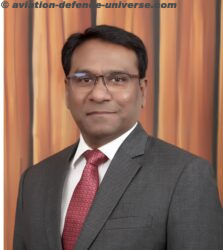S .R.MEHRA IPS (Retd.)
Introduction
Galloping urbanisation is an inexorable global phenomenon. Even as large cities become bigger, new urban areas are emerging. Globally, over six billion people will live in cities by 2050. The situation in India is no different. India already has the 2nd largest (over 31% in 2011) urban population globally. This is expected to grow to over 40% by 2030. The preponderant share of national GDP and government revenues are generated in cities. The present Government has unveiled a plan to establish a hundred ‘smart ‘cities which will impart a further impetus to this trend.
Challenges of Large‘Prosaic and Esoteric’Cities Today
This cascading growth in urban demography, particularly in the developing world and emerging economies, is not unexpected. Cities have increasingly emerged as the cradles of modern civilization. Mega cities increasingly showcase and represent a nation’s economic, commercial, educational, and scientific achievements, its social and cultural heritage and above all its pride and sovereign grandeur. Thus, several pull factors draw people to cities, some as prosaic as seeking a livelihood and others more esoteric like the pursuit of higher learning, fine arts, music and philosophy.
The emergence of such large cities is not without its attendant problems and challenges. City infrastructure, resources and services are under acute stress and unable to sustain the growing demographic demands. Social tensions, industrial unrest, civil disturbances and escalating crime and criminality have become the norm. In order to maintain stability and sustainability and provide uninterrupted services to all its citizens, cities have no option but to turn ‘smart’ i.e. employ the advances in technology, particularly, Information and Communication Technology (ICT), for efficient management.
Being smart is not an end in itself but intended to create an environment in which the citizens could lead wholesome and fulfilling lives. It would necessitate a new kind of governance with citizen involvement and welfare as the centre piece of policies.
The accretion of large populations and the concentration of economic,financial, scientific and socio -cultural -historical – iconic assets as well as high value physical infrastructure in cities manifestly increase their vulnerability. Disastrous events, whether natural or manmade, can result in wide spread destruction, violence, casualties and long term negative impact nationally and even globally. We only need to recall the horrific toll – in terms of human lives, economic and financial losses and the lingering scars onthe psyche of a nation – of the 9/11 attacks on New York/ Washington or hurricane Katrina in Louisiana where the levees were breached and almost the entire city of New Orleans went under water in 2005.
Nature of Threats Faced byEmerging Smart Cities
Cities can be subjected to a wide range of threats i.e. 1) civil disturbances, which can materialise quickly because of thewide spread use of social media a la the ‘Arab Spring’. (It may be expedient to remember that the Arab Spring was triggered in Tunisia as a reaction to an incident of police harassment of a road side vendor who self-immolated leading to spiralling protests. In India we are inured to accepting harassment by cutting edge level public servants as a routine and inconsequential occurrence, but this could change rapidly. ); 2) crime and criminality which inevitably gravitates to urban centres thriving on an enabling environment ; 3) terrorist attacks on human concentrations and strategic economic targets including the use of radiological / biological / chemical agents; 4) insider subversion and ‘lone wolf ‘ attacks ; 5) cyber-attacks by a number of actors , state and non-state ; 6) natural disasters ; 7) ‘ wild ‘ weather stemming from climate change ; and 8) pandemics.
Smart cities are hyper vulnerable because of their reliance on ICT networks and concentrations of interdependent critical infrastructure and the consequent cascading impact of any destruction , disruption or disabling of any critical segment.
Some aspects of this threat perception deserve special emphasis and have relevance to our situation. While cities have been targeted by terrorists since long, they have become the focus of global jihad ever since the 9/11 attacks in New York / Washington and thereafter on a succession of metropolises from Madrid to London, Mumbai (26/ 11) to Moscow, Nairobi and many more. In India, urban terror became a frequent phenomenon after the extension of Pak sponsored jihadi terror beyond J&K into the hinterland around 2000 and peaked in 2008, culminating in 26/11.
Global terrorism recognises our dependence on Critical Infrastructure (CI).Many of the attacks on cities have targeted critical assets. The all-round dependence of smart cities on CI will only increase with time. CI services every aspect of our daily lives like our requirements of water, energy, transport (air / road / sea), financial services to name a few. Cyber networks in particular are beginning to touch everything incrementally and cyber security is of fundamental importance in a smart environment.
The USA (and the EU as well) has over the past fifteen years evolved a specialised discipline to define and address all aspects CI protection, resilience and continuity in the face of varied threats particularly terrorism, under an overarching National Infrastructure Protection Programme ( NIPP ) and a Global Infrastructure Protection Programme (for international supply chains) prepared and implemented by lead agencies ( federal departments ) designated for each of the 16 critical sectors identified for this purpose under the overall supervision of the Department of Homeland Security.
India and Its Critical Infrastructure Protection Plan
In India there is as yet no national critical infrastructure protection plan or policy. Nevertheless, the central and stateGovernments do protect their critical assets by deploying central and state police forces.However, the private sectors bourgeoning CI assets are manifestly inadequately protected. We need to recognise this serious deficiency and urgently evolve a comprehensive and structured national CI protection programme tailored to our requirements, threat perceptions, financial capacity and CI investments.
Maintenance of law and order is the foundation on which successful nations and economies are built. We embarked on preparing our police forces to meet the emerging law enforcement and public security challenges of the 21st century several years before we declared our ambitious project to create a hundred smart cities. Under the auspices of the MHA and funds provided by it , a scheme titled ‘Police Modernisation Scheme’ and its subsequent sub set ‘Mega City Policing’ was adopted and implemented embracing both the Central and State Police Forces.
Mega City Policing vs Varied Threat Matrix
Broadly the scheme emphasised: 1) augmentation of existing capacities and the creation of new ones covering manpower resources , upgradation of arms and equipment , quick and adequate mobility whether land, air or sea ; 2) restructuring the national intelligence set up to enhance its efficacy to generate actionable intelligence; 3) creation of national data bases and tracking systems related to crime / criminals and immigration/ visas/ foreigners; 4) augmentation of existing and creation of new specialist forces/agencies for investigation of terrorist attacks and for CI and CT; 5) induction of technology for city surveillance and monitoring , intelligent traffic management , infrastructure protection , video analytics and; 6) establishment of Command and Control Centres with video walls for monitoring , decision making and Crises / Disaster management and response.
Despite being conceptually on the right track, the additional capacities established on the ground are not as yet commensurate to the requirements or uniform across 29States and7 Union Territories because of varying political intent, emphasis and financialinvestments, police being a state subject. Further , several basic deficits continue to dog the police system including budgetary constraints , inadequate manpower , absence of professional autonomy and capacities , trust deficit in the citizens and a stone walling of structural reforms. Even as India moves towards implementing smart policing and security attributes it has also to get the basics right.
The increasing momentum acquired by the resurgence of the Taliban and the Haqqani group in Afghanistan with Pakistan’s active support after the drawdown of US and NATO forces in 2014, the proclamation of a Caliphate by the IS across large tracts of Syria and Iraq , creating an environment of increasingly assertive and brutally violent radicalism , raise the spectre of a post 1989 redux analogous to the situation after the withdrawal of the Soviet forces from Afghanistan and the diversion of the resources of the Afghan and global jihad to India. The ineffectual and often counterproductive campaign by the USA and NATO in Afghanistan and by the USA and its European and Arab allies in the Middle East has far from stemming the tide , inadvertently exacerbated the spread of radicalism and helped to divert arms and entrench violent radical groups in this area in our near and extended neighbourhoods. Pak proxies and AQ affiliates like the LeT, Jem, HUJI, and Hisbul Mujahedeen are waiting on the side lines to once again ignite terrorism in India.
Conclusion
Smart cities of the future have therefore to contend with this threat matrix. They need to be built on solid foundations, the corner stone of which will rest on a smart integrated foundation of security, safety, resilience and recovery mechanisms and crises management capacities. Our current conceptions of law and order and conventional security have to metamorphose into a much wider matrix of consequence based protection against multiple hazards which factor in the imperative of quick recovery if preventive measures fail or remain beyond our capacity.
The author is a former Secretary (Security) GOI and Senior Advisor SWI / Member Advisory Board SWI




























































































































